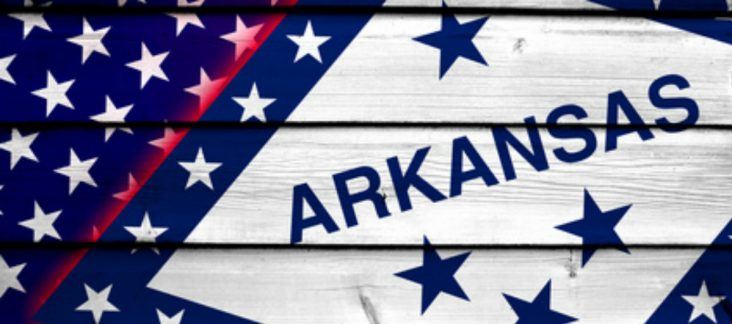Analysis: 7 takeaways from Arkansas’ Super Tuesday
by March 5, 2016 7:29 pm 368 views

Post-election analysis always allows for a level of detail that provides insight into the most recent election results. Looking at the Presidential primary numbers through a variety of different lenses has drawn out a plethora of interesting results that we will explore on Sunday’s Talk Business & Politics TV show.
Thanks to Bobby Kelly with Turtle Target and KATV’s Janelle Lilley for their skills in assembling much of the data we poured through. Here are some notable takeaways:
1) On the Democratic side, Hillary Clinton won 74 of 75 counties (she only lost Newton County, one of the smallest turnout counties in the state). In doing so, Clinton picked up 22 delegates to Bernie Sanders 10. Also of note, there were 220,419 vote cast in the Democratic primary. In 2012, Democrats cast 162,647 votes and in 2008 the Democrats cast 314,234.
2) For Republicans, Donald Trump won the most counties (58), while Ted Cruz finished second (15), and Marco Rubio third (2). Where the counties are located is truly telling. Rubio won Benton and Pulaski counties – the two truest “establishment” counties for GOP strength. Cruz’s county wins are a donut of counties around central and Northwest Arkansas, a lone stand in Craighead County, and a swath of southwest Arkansas counties along I-30 heading into Texas. His numbers are explained by significant Bible belt support in those counties he won and some likely spillover from the Texas media market in the southwest corridor.
Trump’s numbers are astounding. They are purely rural and also centered in highly concentrated retirement regions, such as Hot Springs Village, Cherokee Village, and Mountain Home. More on this in a moment. Trump picked up 16 delegates for his first place finish, Cruz picked up 14 delegates and Rubio walked away from Arkansas with 9 delegates.
3) To round up general observations on turnout, there were 409,828 GOP voters this primary election cycle compared to 152,360 in 2012 and 229,153 in 2008. Sen. John Boozman, who faced primary challenger Curtis Coleman, had an easy re-election bid for his party’s nomination and the number of Republican voters who cast Presidential ballots but didn’t vote in the Senate primary was small. Only 21,403 primary voters left the Senate box unchecked – a number equaling roughly a 5% drop-off.
4) Turning to early voting totals, there were 167,739 statewide early voters. This equals about 26% of the total Super Tuesday turnout of 639,146. We’ll use the early voting sample for a deeper study of the voting trends on Tuesday. With the sample being as large as it is and the data more readily available, it gives us a great read on trend lines. Of the early vote totals, here are some key characteristics: 52% were female; 84% Caucasian, and 13% African-American.
5) Early voters – which should be predictive for Voting Day – were full of “infrequent primary voters.” Of those early vote totals, about 51,000 (or 30%) have voted in none of the last three primary cycles. Another 20% had only voted once in the last three primaries before Tuesday, meaning 50% are “infrequent” – not known for showing up to vote in a primary. But they were motivated this election.
6) So are they Donald Trump first-time voters or Bernie Sanders first-time voters? Not only do the overall results on Super Tuesday tell us the answer, but the age demographics do too. Here is a breakdown of age by percentage of our early vote sample.
Ages
18-24 – 3.9%
25-34 – 8.8%
35-49 – 16.5%
50-64 – 31.2%
65+ – 39.5%
7) Basically, 71% of the early voting sample was age 50 or older. They were heavily white and they voted in huge numbers in the Republican primary, whereas half of them don’t normally show up to vote in any primary. This is a seismic development in terms of voter turnout and probably suggests that without the Trump phenomenon in the next Presidential election cycle, we shouldn’t expect a similar result.
And here’s another fact to support this theory of this election cycle being exceptional to previous ones. As we’ve already noted, Super Tuesday brought out 639,146 Presidential primary voters. Primaries are always lower than general election turnout. Yet 2016’s primaries had the equivalent of 75% of what we saw in the 2014 general election. You remember that one – it involved Mark Pryor versus Tom Cotton and Asa Hutchinson versus Mike Ross. There were millions of dollars spent and the hottest of national spotlights on Arkansas for those races. Only 852,642 voters showed up in November 2014. This year’s primary looked more like a general election turnout than a primary turnout. There were more than double the number of primary voters compared to 2012’s Presidential cycle.
Watch KATV’s Janelle Lilley and TB&P’s Roby Brock analyze more of this data from this week’s TV show.
